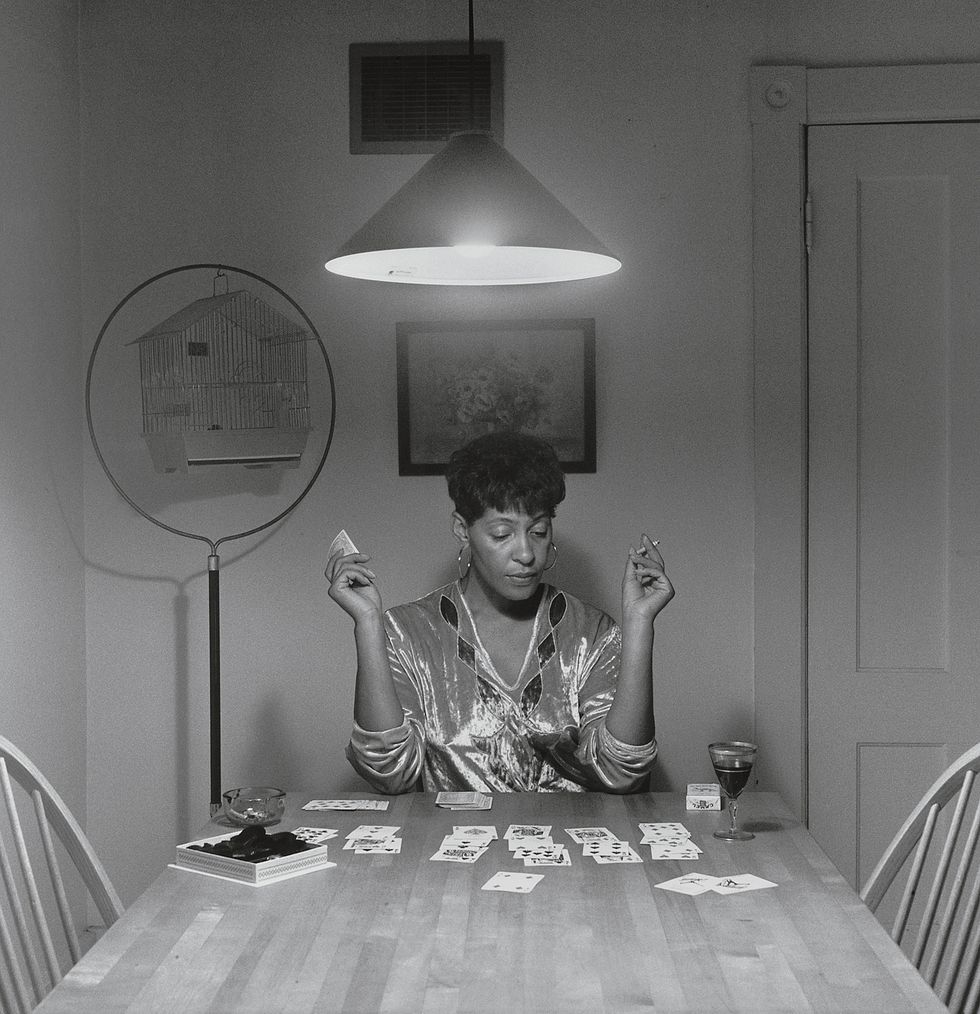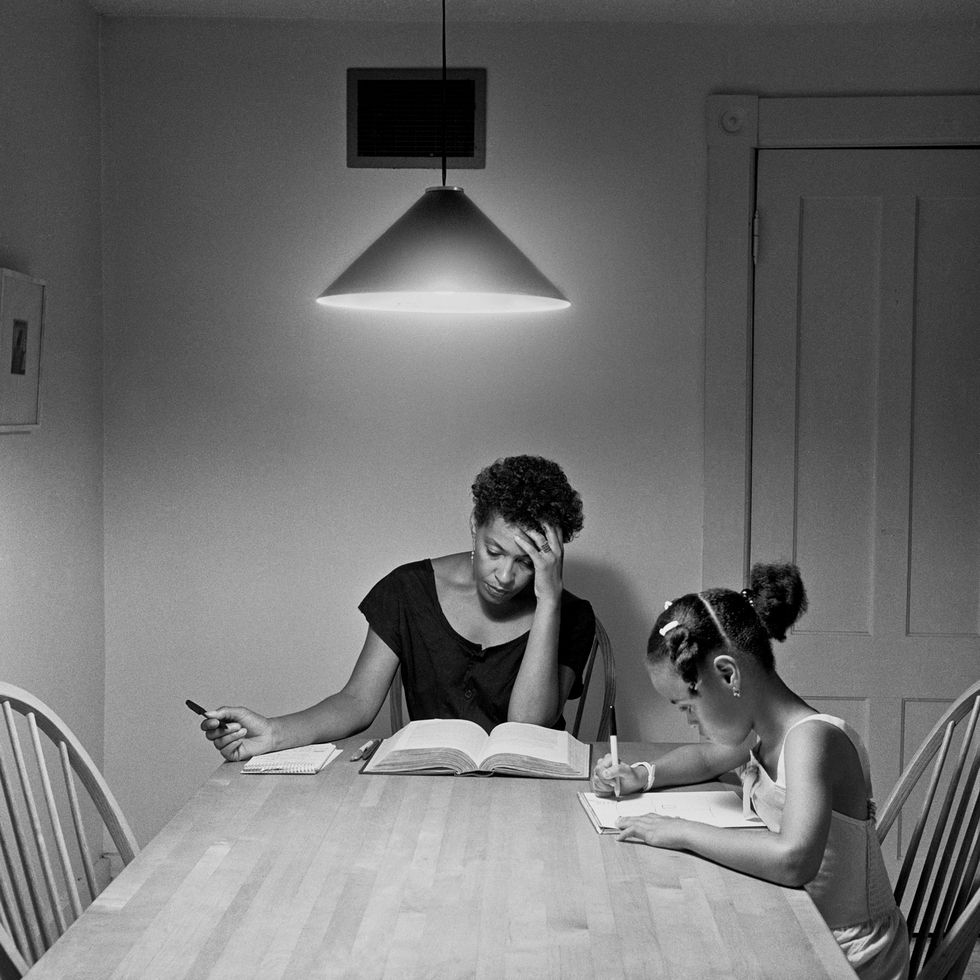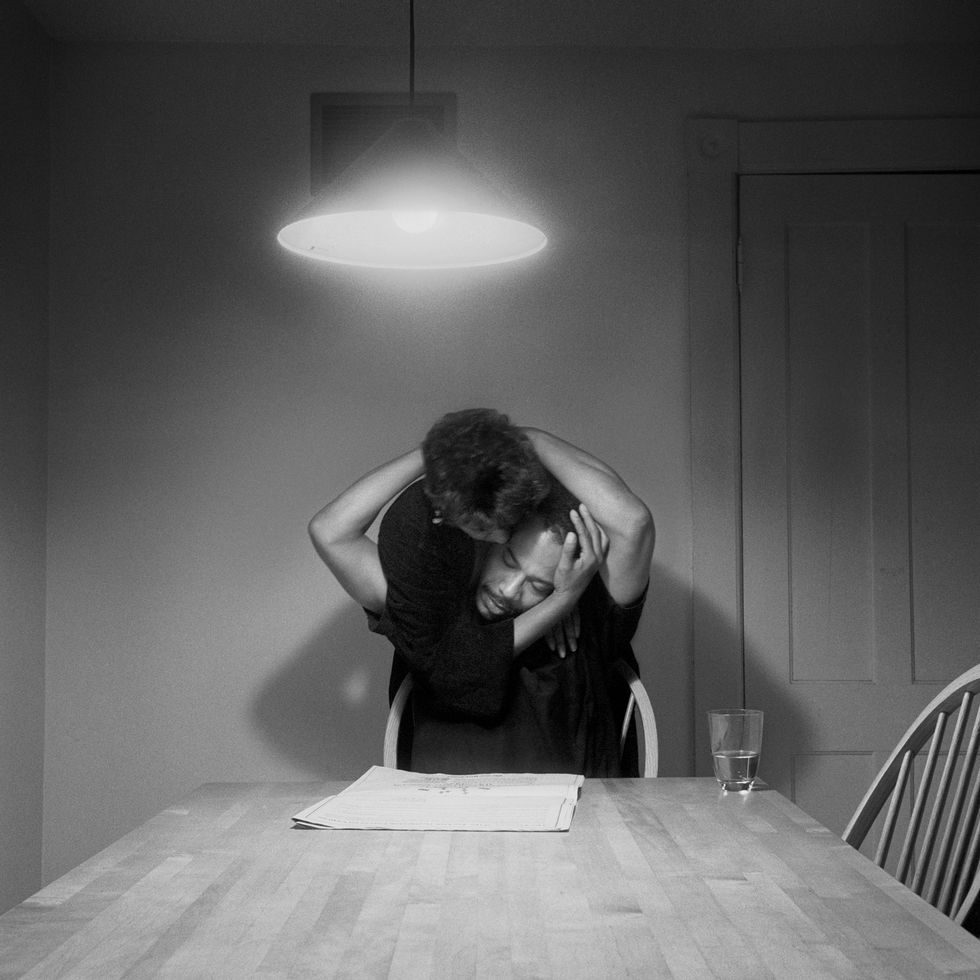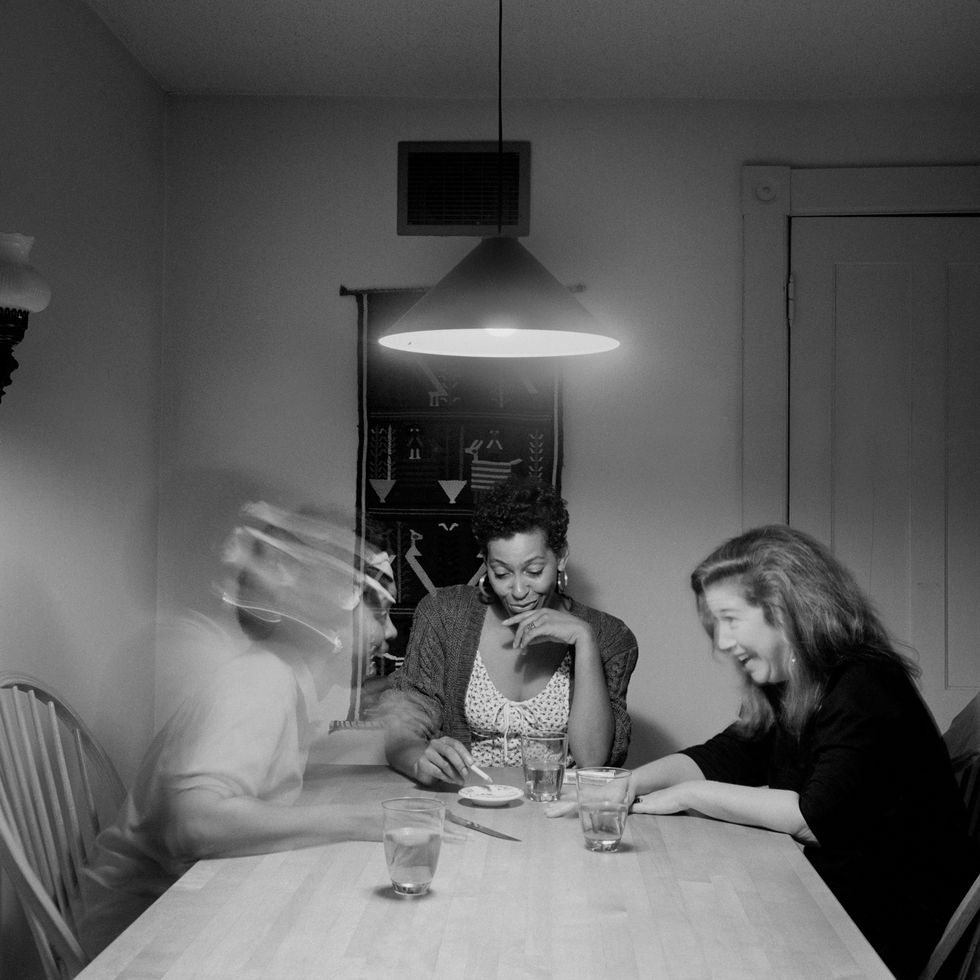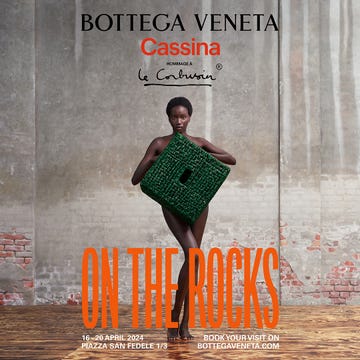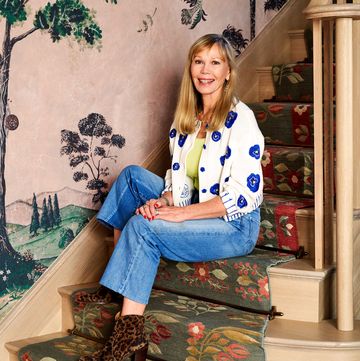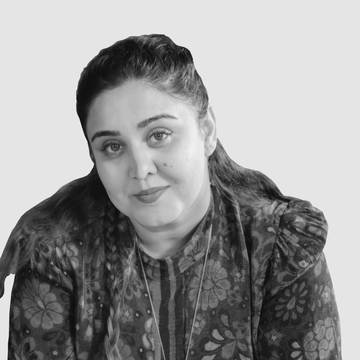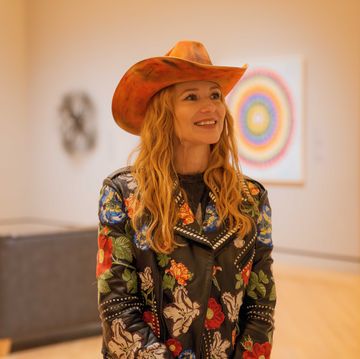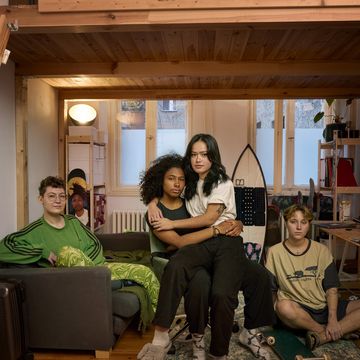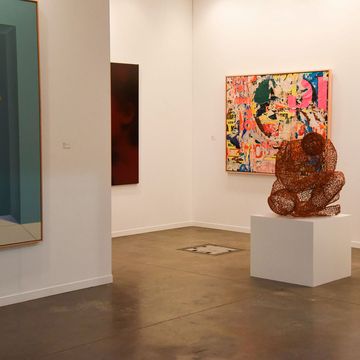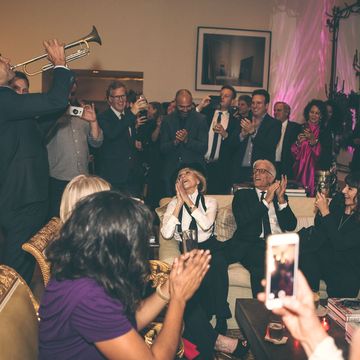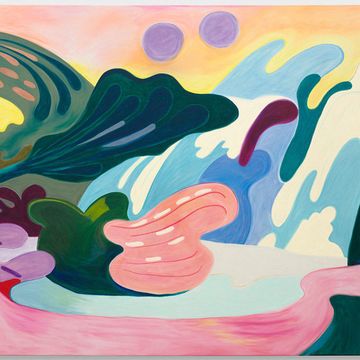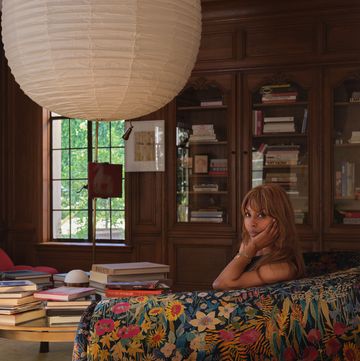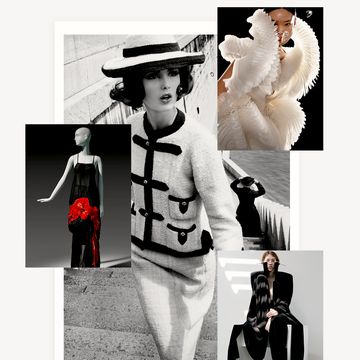Carrie Mae Weems is one of the most important image-makers of our time. Her work in photography, social practice, performance, and video has grounded our understanding of the power of visual storytelling and investigated subjectivity in domestic and public spaces. This April, nearly 30 years since she produced her ambitious and revelatory Kitchen Table Series—a collection of twenty photos, all shot in her kitchen, and fourteen text panels—the first monograph celebrating the project was finally published.
In her introductory essay to the text, scholar Sarah Lewis describes Kitchen Table Seriesas "a body of work that probes the depths of our development: how it is that we become." Long before the age of the selfie, Weems embarked on an unprecedented exploration of interiority. Very often her own subject, Weems produced work that is raw and personal and in many ways informs how we understand self-imaging even now.
I've never had my own kitchen, but I've always had a relationship to the themes explored in Weems's series. In fact, it's hard to point to my first encounter with her work, because it's seemingly always been a part of my visual vocabulary as a young black woman who was born in the 1990s.
When we spoke, she had just returned to New York after being honored by the Anderson Ranch Art Center for her extraordinary contributions to the field.
When did you first start taking photographs?
Well, you know, actually I started taking photographs when I was about eighteen. My boyfriend at the time gave me a camera for my birthday. I'd always been interested in art in some sort of way, but the moment that I started taking pictures ... everything kind of clicked. Every facet of me said, "Yes, this is what I am going to do. This is my way forward. This thing, this instrument, is going to lead me into my life." The first person I photographed was a black woman, a friend of mine who I knew. I wasn't interested in doing anything fashion oriented, but I wanted to immediately work with black women. I knew that that was important.
In addition, I had become familiar with these incredible volumes of black photographers' work. The Black Photographers' Annual was produced by an incredible man named Joe Crawford, who has since passed away, but he worked with people like Roy DeCarava and the Kamoinge Workshop. Ming Smith was one of the only women involved in the Kamoinge Workshop. The Kamoinge maybe had 20, 25, 30 men and this one lone woman. Of course, I immediately started looking at her very closely and looking at photography very closely. The Black Photographers' Annual showed me that black people needed to be engaged and described through this medium.
Wow, I'm so glad that our dialogue begins with the Black Photographers' Annual and Kamoinge as part of this conversation because I feel like those are two important pieces of art history that are often left out of the conversation. I know that before photography, you studied dance. Could you tell me more about that? Does it connect to your photographic work?
Oh yes. It really wasn't my intent to be a dancer. It was just a natural part of my makeup. I had joined Anna Halprin's company. She was a very progressive, interesting, dynamic dancer — who is still dancing to this day in her 90s. In 1970 she was already really interested in bringing [diverse] people together in order to have them experience one another, [as a way to be] in touch with the deeper humanity of the people around you that may look different from you.
What I think dance also gave me was a sense of how one can use the body and how the body can be used as an expressive tool. I started doing self-portraits. I always thought about the pictures of myself as not necessarily of myself but as an entity, a form that could express something that needed to be expressed. I started using myself very, very, very early on.
Ah, yes, this is a great segue into talking specifically about The Kitchen Table series. One thing that I find really interesting is that you were able to use your body as a performative element to express something much broader than your singular experience in the world. Could you speak a little bit about the origin for the piece? I know that you shot it in Northampton, Massachusetts, correct?
I did, I did. I always say that if you get out of the way of your work, your work will tell you exactly what it needs. Usually your work is much more forward-thinking than you are. Half of what we do, we're doing almost intuitively. It's later that we really understand what we've actually done or why we've done something a certain way or for that matter what something even needs.
For example, spaces are very unique. Not every space can provide you with the richness of the subject that you need or the background, the ambience, the feeling, the mystery. Places, spaces really carry weight with them. Often women use their homes as their site of production as opposed to men, who rarely do, which is very interesting. I think that often women work in this way.
Could you tell me more about what was going on in your personal life as you embarked on the series?
Back then I was teaching—working with a number of young people at Hampshire College. It was one of those volatile moments—seminal texts on feminism were being produced, discussed, talked about. Laura Mulvey's very important essay "Visual Pleasure and Narrative Cinema" on the gaze had been produced, and everybody was referencing that and talking about that. The assignments that I often gave my students, I always asked them to make a portrait of somebody else and then a portrait of themselves, because I wanted them to see the differences in terms of how they represented themselves as opposed to how they represented others. The way in which men photographed themselves was deeply frontal. Women always photographed themselves turned to the side and slightly obscured. Their faces were never quite open and flat to the camera. They were always hidden behind hair, hidden behind objects, hidden behind things. It's sort of a vulnerability of revealing the self.
I was thinking about the ways in which my students were working and I was also thinking about the way in which the dialogue had taken place and how it had very much excluded the black female body. It was just not a part of the discussion. Those things came together to really form the initial impetus for Kitchen Table. I knew that I wanted to be involved and bring together a group of people to examine monogamy, polygamy, the structure of family, the structure of the relationship between men and women, the structure of the relationship between women and their children. There's also a structural relationship between women and other women.
All those things just came together in sort of like this compression of ideas. From the moment I presented the work, it has been seminal. It's been seminal to the discourse on photography and in photography and in the ways in which women can be imagined or have been imagined, whether I'm showing the work in France or Spain or Japan. It doesn't really matter. People simply connect because family structures, the structure of family, and patriarchy exist pretty much across the board. It knows no bounds because it's a part of a very particular system of organization.
Kitchen Table came about really in that way. I worked on it constantly! I made photographs every day. I would process them every day. I would print every day. I would look at my mistakes. I would come home and I would photograph again. I'd go back to the lab. I'd process again, print again, process my mistakes until it all started to come together.
Then the text just came in this extraordinary burst of energy and insight and meaning and meeting with people, with two men that I was very, very, very, very close to. I pulled out a tape recorder after leaving one of them and just recited it to myself.
Ah, what a lovely image.
Yeah. That's really how Kitchen Table and the accompanying text came about...In a more concise way, in that moment, I needed to speak to and across the ways in which women had been discussed in film, theater, and photography. I needed to speak of representation and systems. In the text, I aimed to unpack systems of private property, systems of relationships that keep us tied to them and make us accomplices in our own victimization, or ones that manage to free us somehow. Understanding the complicated relationships that we are involved in. The work comes about because it needs to speak to something that's happening in the larger world.
As a person who is so much a digital child, I think about selfie culture and how it's really rapid. You take out your phone, you click, and your image appears almost immediately. As I think about the process that you've described, I think about how all this work was done in the time before digital photography and I'm fascinated by a seeming element of surprise. You didn't know what your final result would be instantaneously.
Conceptually, trying to figure out how to make, how to produce, how to design, how to overcome the objectification of the female form—How do you do that? How do we do that? It was a question that I think we were all asking at various levels of our career and answering, of course, very differently...The historical writing, the art-historical writing, the art criticism, the art reviews haven't kept pace with the art. It's really lagged behind. It's taken 30 years to take Kitchen Table and place it in its proper context. Thirty fucking years later.
Right. That's just...
...It is pretty baffling. A piece like this that has been so seminal in so many ways and that has literally sustained workers, galleries, and myself, that has the power to do that, has never been completely valued for really what it is. Therefore, it took a lot of time for it to reach publication in a significant way. This sort of systematic undermining and devaluation of what women do is pretty profound.
For instance, look at the difference between an artwork by Georgia O'Keeffe and a work by Francis Bacon. The highest price ever paid for a Georgia O'Keeffe painting, the most for a piece by any woman, was $44 million. The highest price paid for a man, a male artist, at least in the last count, was something like $178 million. The highest price paid for a black artist up until recently was about $300,000, $400,000. Four hundred thousand dollars, $44 million, and $178 million, that's disparity. Those are the numbers.
Right. Numbers don't lie.
Need I say more?
So much more than the numbers...is your point about the literature. It's just really wild to me, especially as a younger curator, that these texts are few and far between and there's so many people who...well, I don't know how to remedy it or what that looks like, but the work shouldn't have to wait.
On another note, a thing that I really admire about your work is that text plays such a major role in all of it. I think a lot of younger artists who are coming up now don't understand the importance of holding your own voice within the work. At the end of the day, the artist is their own best advocate. The artist is the only one who is fully aware of the social history and the intention of an artwork. I think about you, Lorraine O'Grady, and Coco Fusco as women who are really doing the work for the work.
The notion of representation is really key to the work. At one point in my 40s and 50s, I thought, How do I want to work now and how do I want to represent? What can this body stand for now? Asking myself that question. What can this body, this body of mine and this skin, what can the skin do now that it couldn't do when it was 30 or maybe can't do because it isn't 30? I'm thinking about age. I'm thinking about the way my body changes and therefore how to use it differently.
I realized at a certain moment that I could not count on white men to construct images of myself that I would find appealing or useful or meaningful or complex. I can't count on anybody else but me to deliver on my own promise to myself. I love Fellini. I love Woody Allen. I love the Coen brothers, but they're not interested in my black ass. They're simply not interested. They have no sense that ... We don't even occur to them as subjects. We don't even occur to them as a viable fucking subject. Not to even say hi to. That's how distant we are from their fucking imaginations. I can't count on them to do my job. I just can't count on them. I can't count on them to play fair. I can't count on them to think about me in any sort of serious way, because it's clear that they don't.
I look at it as unrequited love. You know? I love them, but they ain't thinking about me. It's not really a complaint. It's just the reality. I build a form for myself that don't exist anyplace else. I don't see me represented in any other serious way anyplace else for the most part.
Yeah. I love that ... it's not a complaint, it's a reality. There could be so much lost in it being a complaint. It's really easy to just hold yourself in this period of grieving for this love being unrequited, and in the meantime you can just be real and use yourself in all the multitudes of what yourself can be.
I do think that you have to make what you want to see in the world. That is basically your obligation if you're an artist. For that matter, even if you're a plumber. You really have to make your reality meaningful for you, and you can't necessarily rely on anybody else to do it. That is, I think, the great liberty that the arts and letters and music give us ... the ability to create meaning in our lives.
This interview has been condensed and edited.
Kimberly Drew is a curator, the creator of the popular Black Contemporary Art Tumblr, and the person behind @museummammy on Instagram.



